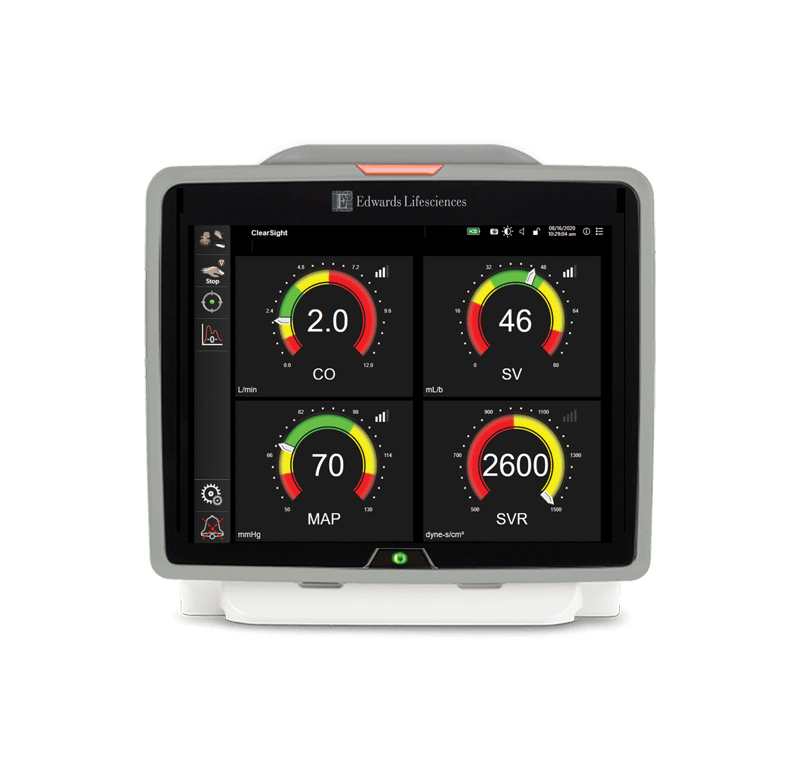
Unlocks Acumen HPI software
Acumen IQ sensor unlocks this first-of-its-kind technology designed to help predict future hypotensive events.*
Pour le canadien français, veuillez suivre ce lien.
Minimally-invasive predictive decision support
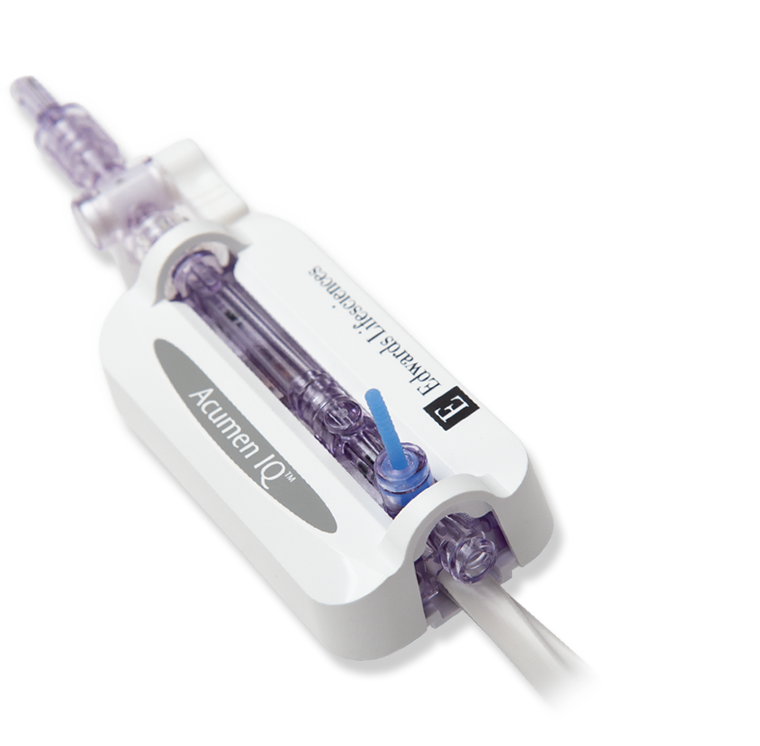

Acumen IQ sensor unlocks the ability to predict hypotensive events* and provides insight into the root cause of hypotension (preload, afterload, and /or contractility) with Acumen Hypotension Prediction Index (HPI) software. This next generation sensor is built on the foundation of the Edwards Lifesciences FloTrac sensor.

Acumen IQ sensor unlocks this first-of-its-kind technology designed to help predict future hypotensive events.*
Acumen IQ sensor attaches to any existing radial arterial line and automatically calculates key parameters every 20 seconds.

Acumen IQ sensor is part of an advanced hemodynamic family of solutions that help guide individualized treatment decisions.
*A hypotensive event is defined as MAP <65 mmHg for a duration of at least one minute.
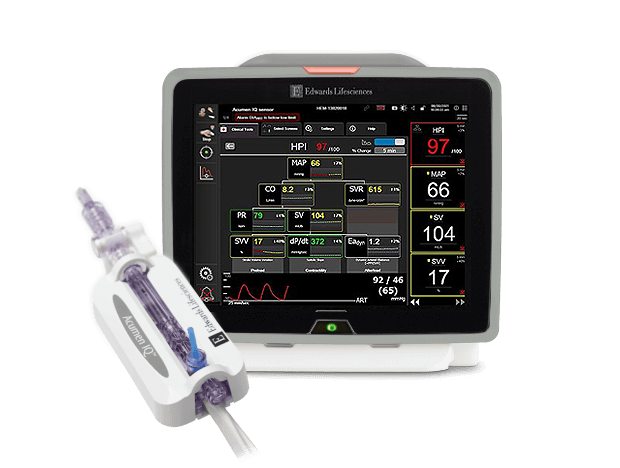
Acumen IQ sensor is available on the HemoSphere advanced monitoring platform. This sensor unlocks Acumen HPI software and enables you to proactively optimize perfusion using continuous blood pressure and advanced hemodynamic parameters. This first-of-its-kind predictive decision support software detects the likelihood of a patient trending towards a hypotensive event* before the event occurs, and provides you with insights to understand the root cause and inform a potential course of action for your patient.
Acumen IQ sensor attaches to any existing radial arterial line and automatically calculates key parameters every 20 seconds, reflecting rapid physiologic changes in surgical and nonsurgical patients in intensive care settings.
*A hypotensive event is defined as MAP <65 mmHg for a duration of at least one minute.
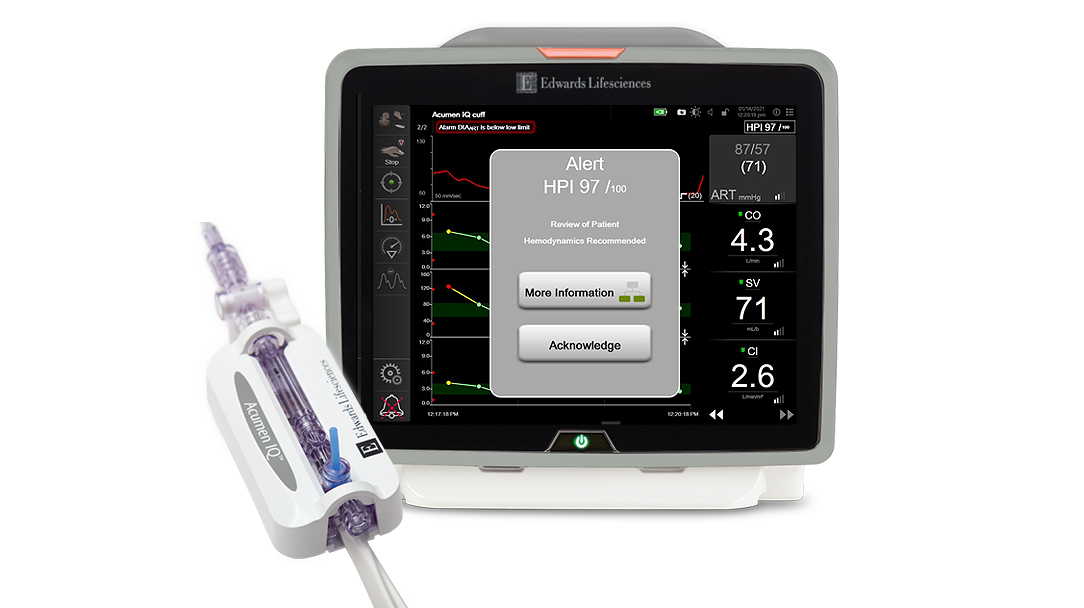
Maintaining necessary peripheral perfusion requires adequate peripheral blood pressure and adequate cardiac output. Acumen IQ sensor offers advanced hemodynamic parameters and continuous blood pressure to help you monitor perfusion, and access to the Acumen HPI software which provides you insight to determine the root cause of instability.

Research findings have revealed strong association between intraoperative hypotension (IOH) and elevated risk of both acute kidney injury (AKI) and myocardial injury after noncardiac surgery (MINS).2,4,5
Acumen HPI software is effective in detecting hemodynamic instability and substantially reducing the amount of intraoperative hypotension when used in surgical patients who require intraoperative hemodynamic monitoring during noncardiac surgery.1
88% of patients continuously monitored with an arterial line still experienced hypotension, defined as MAP <65 mmHg, for at least 1 min.4
Prolonged exposures below mean arterial pressure (MAP) thresholds of 65 mmHg are associated with increased risk of mortality, myocardial injury, and AKI after noncardiac surgery.2,5
Acumen HPI software has demonstrated a reduction* in the duration of IOH by 57%.1
* Single arm, multicenter, prospective-to-historical control where patients received arterial line monitoring.

Dynamic and flow-based parameters are more informative than conventional parameters in determining fluid responsiveness and may help guide individualized volume administration in patients and avoid excessive or insufficient administration.
Continuous access to pressure and flow parameters allows you to evaluate hemodynamic instability and guide appropriate treatment. When managing perfusion, stroke volume can be optimized using the patient’s own Frank-Starling curve.

The Acumen intelligent decision support suite offers predictive decision support for the management of a hypotension.
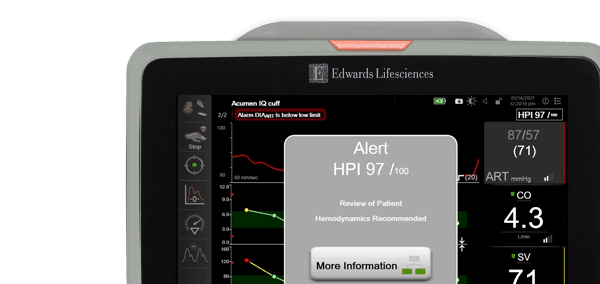
Acumen HPI software provides you with information regarding the likelihood of a patient trending towards a hypotensive event, and provides you with insights to understand the root cause and inform a potential course of action.
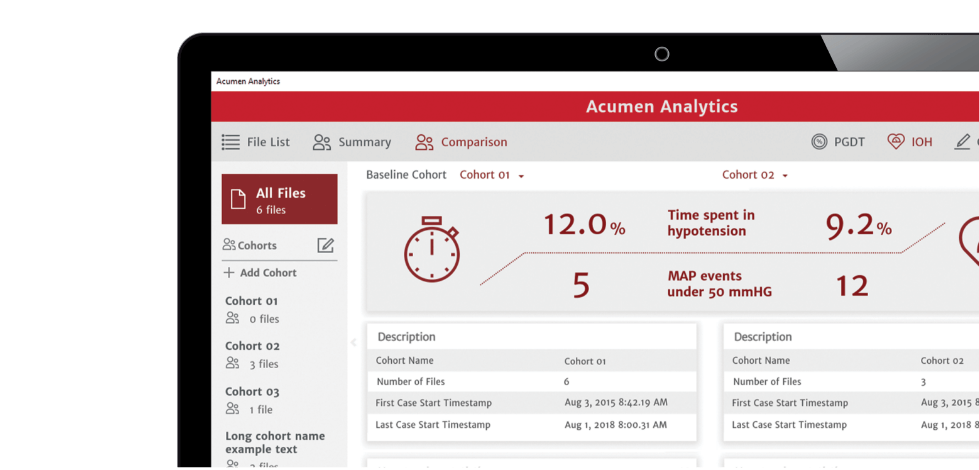
Acumen Analytics software enables you to retrospectively view and analyze hemodynamic parameters, including mean arterial pressure, providing you insights into the frequency, duration and prevalence of intraoperative hypotension in your practice.
With a long-term commitment to improving the quality of care for surgical and critical care patients through education, Edwards clinical education meets you no matter where you are in the learning process — with a continuum of resources and tools that continuously support you as you solve the clinical challenges facing you today, and in the future.
We are committed to providing your institution, clinicians and staff with the highest levels of customer service and support to ensure seamless product implementation and ongoing use, including:
24/7 Technical support
For product information and orders
